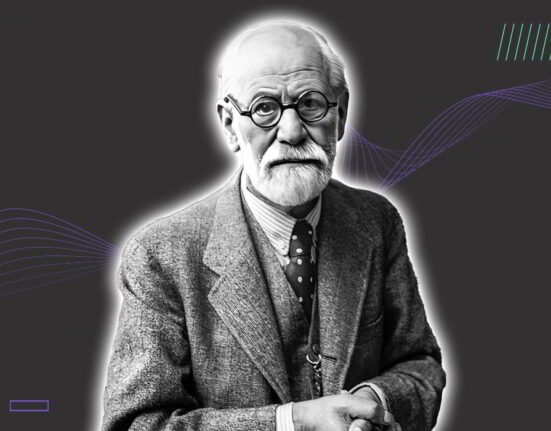Suicide is not a common phenomenon, although it is highly traumatic for those left behind. The World Health Organization (WHO, 2016) notes that there are 16.5 suicides per 100,0000 people in India, a high rate relative to the rest of the world. Yet these numbers may be deceptively low, particularly when considering some demographic groups; college students may comprise a significant number of these suicides. On September 10th, World Suicide Prevention Day, the city of Kota in Rajasthan, India, registered its 23rd student suicide, reaching an all-time high since 2015 (The Wire,2023).
The National Crime Record Bureau (NCRB) reported a 70% increase in student suicide victims since 2011 in 2021 (NCRB, 2021). All of these are unfortunate and startling truths about the silent epidemic that is student suicide in India. To understand this phenomenon from a personal angle, we interviewed a Computer Engineering graduate from one of India’s prime STEM institutes. We learned about the conditions students faced during the pandemic, and how students dealt with student suicides on campus. The student (identity withheld for privacy purposes) recalled the way in which their university addressed these suicides and how they felt when these deaths occurred.
Read More: 1st year Survival Guide for College students
To this student’s knowledge, most of the suicides took place closer to the end of the semester, between the months of April and May, just weeks before graduation. This timeline also corresponds with the timeline discussed in articles published by the Times of India in 2023 about student suicide. When asked what might be driving this higher rate, this student stated that they believed there was mounting pressure to perform in order to graduate, because of the weight given to the final exams in each course.
Student suicides are often shrouded in secrecy, with universities reluctant to have them investigated. This issue of reported versus unreported suicides is not uncommon; data from the National Crime Records Bureau (NCRB) suggests that only 63 in 100 deaths are reported (NCRB, 2021). Thus, we can assume that known numbers grossly underestimate the actual number of suicides on a campus. The student we spoke to confirmed 3 suicides, but estimated that a more accurate number would be over 80 deaths per year because several suicides went unannounced.
Read More: Academic Pressure on Higher Studies and its Impact on Students Mental Health
There are many reasons why reported numbers are low, including fear of public attention, prestige of the institution, and the stigma of suicide itself. The student we interviewed believed that it was possible that the school took several steps to withhold information from the students, faculty, and the media about the deaths and attempted to hush up any investigations and post-mortem formalities. The student also suspected that access to private hospitals on campus helped with concealing the deaths.
They stated that doctors at these on-campus hospitals may help university officials and medical specialists to speed up and conduct post-mortem examinations and legal formalities without the media getting wind of the suicide. The student recalled ambulances driving under cover of darkness to remove the body of a student without most students even knowing what had happened until much later. The student suspected that pride and prestige also had a lot to do with the school not publicly addressing the deaths.
Read More: Academic Stress and College Students

Perhaps university officials fear that student registration would be affected if it were known that students at a particular university commit suicide at a rate much greater than the national average. This interviewee’s university was politically connected to a prominent politician in the area, which could have also contributed to why university officials were able to conceal the suicides without getting the police involved.
More often than not, the only reason students become aware of a suicide is through their social circles or because they know the student directly. Mehrotra (2020) notes that there is a dearth of mental health resources available to students pursuing higher education in India. The students we interviewed confirmed this, noting that when a suicide occurred, they heard that the faculty were advised not to address the issue or to share information with students. Sadly, no steps were taken by the school to support students after the suicides that students knew of. According to the student, there were little to no mental health resources on campus, and even if there were, students were not aware of it because it was not publicized at all.
Read More: 7 Ways to Manage Assignment Stress in Students
Would Indian University Students Utilize Mental Health Services If Offered?
When asked whether such services would be used, the student indicated that they would probably not have used such resources unless they lost their own friend to suicide and needed support. Still, it would be comforting to know that the services were available if needed. The interviewee alluded to the possibility of other students not being comfortable with accessing the resources even if they were offered because of how stigmatized mental health is in the country. Additionally, in their experience, the faculty were unable to support the students in ways other than offering to talk.
A contributing factor to this could be the large class and cohort sizes, with each division at a university having an estimated 75:1 student: professor ratio, making it harder for faculty to develop a rapport with individual students. Such difficulties around faculty supporting students’ mental health are not limited to India; A study conducted by Boston University (2021) found that more than 80% of faculty want to help students deal with mental health issues but don’t feel equipped to do so.
Read more: Examination Anxiety: One of the biggest issues for students
The students we interviewed believed that most of the suicides at their university were related to the academic pressure that students felt towards the end of the semester. They mentioned that there were more courses in the first two years of the degree, but decreased in the last two years, with an increase in the intensity of the topics covered. They admitted to finding the courseload hard and mentioned that most students felt the same way.
They also acknowledged that many students came from traditional Indian families and rural parts of the country, where mental health resources are not available and most traditional families avoid utilizing mental health services as such services are associated with the chronically mentally ill. This unawareness and the stigma associated with mental health use create obstacles for people who attempt to identify a mental health problem they have trouble coping with and seeking help for it. With familial pride and prestige also playing key roles, many may choose not to seek help to keep their family name intact.
The students we interviewed believed that the student suicide crisis was generalizable to other STEM schools that they were aware of. They mentioned knowing students at other universities who had similar experiences and shared how the issues these students faced were not addressed by any student community or other figures of authority. The concerning factor is the ever-increasing number of student suicides, which have seen a two-fold increase from 2001 to 2021 as reported by the Accidental Death and Suicides in India (ADSI) division of the NCRB (ADSI, 2021).
Read More: Indian Students Studying Abroad Reports Mental Health Problems
From existing data, we know that this student’s experience is not an isolated case. It is imperative for our country to work towards providing better education and support systems to the country’s future generation. To improve our country’s mental health outcomes, we need our youth to feel supported and have their experiences acknowledged so that this silent crisis becomes a thing of the past.













Leave feedback about this